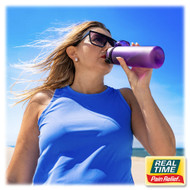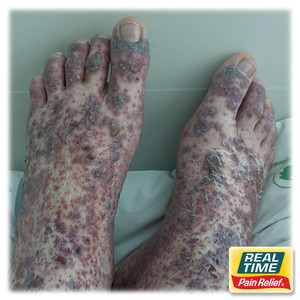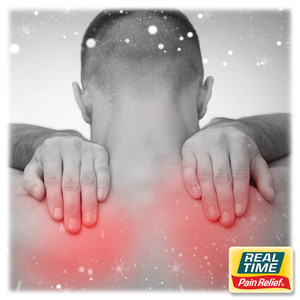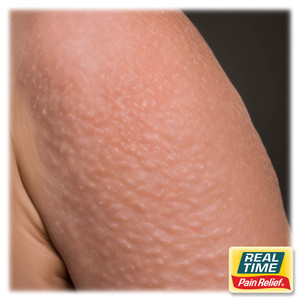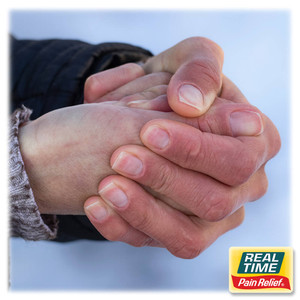Hydration and Joint Health: How Topical Relief Complements Your Water Intake
Posted by Dennis R Escalera on 22nd Jun 2025
Introduction
When temperatures rise, we often hear the reminder: “Stay hydrated!” While hydration is essential for overall health, its impact on joint health, mobility, and pain management is often overlooked. In the summer months, dehydration can exacerbate joint discomfort, making it harder to stay active and enjoy warm-weather activities.
This article explains how hydration supports joint function, how dehydration can increase pain sensitivity, and how topical creams and lotions with nature’s ingredients may provide complementary relief for joint-related discomfort.
The Link Between Hydration and Joint Health
1. Water Makes Up a Large Portion of Joint Structures
The human body is composed of about 60% water, and joints are no exception. Synovial fluid, which cushions and lubricates joints, is largely water-based. This fluid prevents friction between cartilage surfaces during movement.
- When hydrated: Synovial fluid maintains optimal volume and viscosity, helping absorb shock and facilitate smooth movement.
- When dehydrated: Fluid volume decreases, resulting in stiffness, reduced flexibility, and discomfort.
2. Dehydration Increases Inflammation
Studies show that chronic dehydration may elevate pro-inflammatory markers in the body, which can worsen joint and muscle pain.
- Inflammation and oxidative stress tend to increase when the body is deprived of fluids.
- Cartilage tissue can become more prone to wear and tear under dehydrated conditions.
3. Muscle Cramps and Tightness
Muscles support joints, and muscle dehydration can cause cramping, spasms, and tightness that stress nearby joints. Electrolyte imbalance (especially low sodium and potassium) plays a role here.
- This can lead to overcompensation in joints and eventually pain or inflammation.
- Hydrating with water and electrolyte-rich foods (like cucumbers, watermelon, and oranges) helps maintain balance.
Topical Relief as a Hydration Partner
Topical pain relief products can't rehydrate your body internally, but they may enhance the comfort and mobility of joints and muscles, particularly in hot weather. When used alongside good hydration habits, they form a holistic approach to joint care.
1. MSM (Methylsulfonylmethane)
MSM is a sulfur-containing compound that helps reduce inflammation, muscle soreness, and joint stiffness.
- Benefits: Supports collagen production and tissue flexibility.
- Scientific Support: Shown to significantly improve pain and physical function in people with osteoarthritis.
https://www.ncbi.nlm.nih.gov/pmc/articles/PMC5372953/
2. Boswellia Serrata (Indian Frankincense)
This botanical extract has been used for centuries to support joint and inflammatory conditions.
- How it works: Inhibits enzymes responsible for inflammation, especially in arthritis.
- Topical Benefits: Often included in joint creams for localized relief.
https://pubmed.ncbi.nlm.nih.gov/35512759/
3. Turmeric (Curcumin)
Turmeric's active compound, curcumin, has potent anti-inflammatory and antioxidant properties.
- Topical Use: Helps reduce joint discomfort and stiffness, especially when combined with absorption enhancers like black pepper oil.
- Study Evidence: Shown to improve joint function in people with arthritis.
https://www.ncbi.nlm.nih.gov/pmc/articles/PMC5664031/
4. Essential Oils (Peppermint, Lavender, Ginger)
Many essential oils used in pain relief formulas offer dual action:
- Peppermint: Provides cooling and pain-relieving effects.
- Lavender: Reduces stress and inflammation.
- Ginger: Enhances circulation and supports joint function.
These are often blended into topical products for synergistic effects.
https://www.ncbi.nlm.nih.gov/pmc/articles/PMC6612361/
Why Topical Relief Is Ideal in Summer
- Non-invasive and does not interfere with digestion, which may be impacted by heat.
- Localized action targets the affected area without burdening the whole system.
- Sweat-compatible formulations (fast-absorbing, non-greasy) are more comfortable in warm weather.
- Complementary to hydration by relieving discomfort while hydration works internally.
Daily Hydration Tips for Joint Health
- Drink 8–10 cups (2–2.5 liters) of water daily—more if you're active or sweating heavily.
- Include electrolytes from coconut water, fruits, or natural supplements.
- Start your day with water and sip consistently throughout the day.
- Eat hydrating foods like watermelon, cucumbers, oranges, and strawberries.
- Avoid excess alcohol and caffeine, which can dehydrate.
Combining Hydration and Topical Relief: A Balanced Approach
Let’s say you're a gardener or enjoy walking outdoors during the summer. The repetitive motion and exposure to heat can lead to joint tightness, inflammation, or muscle fatigue.
A comprehensive strategy would be:
- Hydrate with water and electrolyte-rich foods throughout the day.
- Apply a topical cream with nature’s ingredients like turmeric, MSM, and peppermint oil to knees, ankles, or back before or after activity.
- Stretch and cool down post-activity to prevent stiffness.
- Reapply the topical product every 4–6 hours as needed for ongoing relief.
Conclusion
Joint pain during summer can be aggravated by heat, dehydration, and physical activity. Staying hydrated ensures that your joints remain lubricated and inflammation is minimized. At the same time, topical creams and lotions with nature’s ingredients offer quick, localized comfort that allows you to stay active and enjoy summer life.
By combining hydration from within and natural topical support from the outside, you may keep your body moving comfortably—even when the heat is on.

